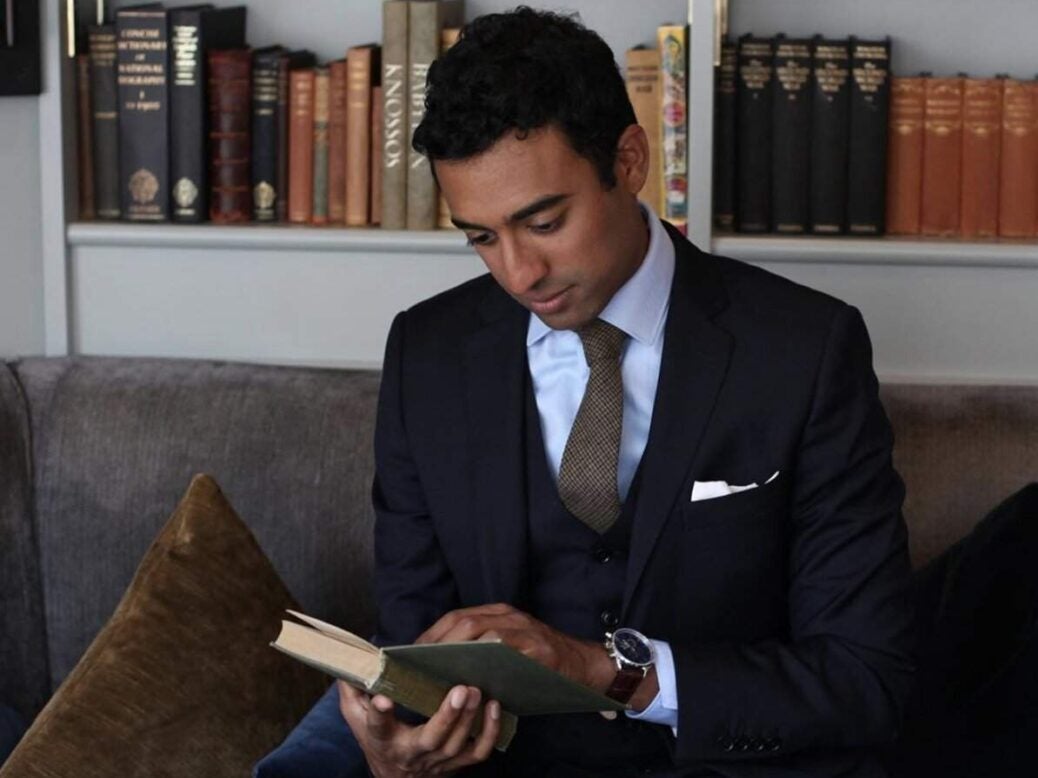
For entrepreneurs and aesthetes from Jeremy Hackett to Spear’s contributor Nick Foulkes, working from home during lockdown is no excuse to let sartorial standards slip
It is rather ‘unpractical’ to wear a tie while working from home, admits Konrad Olsson. But, the editor-in-chief and founder of Scandinavian MAN magazine reckons, it’s worth it.
Olsson hasn’t always dressed particularly smartly for the office, but since being forced to work from home by the coronavirus crisis, he’s rediscovered the joy of putting on a tie and jacket. ‘Dressing up is an act of optimism,’ he says. ‘It makes the day feel more like proper work, rather than “doing some work from home”.’

Of course, Olsson isn’t the first person to make the connection between how we dress and how we feel. He credits the legendary journalist Gay Talese, who insisted on ‘dressing up for the story’ when he was a reporter at the New York Times in the 1950s, as his inspiration.
‘What I meant by that,’ Talese once explained, ‘was that I thought what I was doing was very important. I believed that the people who worked with me as colleagues on the New York Times were least likely to lie than anyone else in New York.’
There’s scientific evidence to support the idea that clothing has an influence on behaviour. A paper in the Journal of Problem Solving noted that test subjects wearing a white lab coat performed better and were better able to focus on tasks, ‘due to the symbolic meaning and physical experience of wearing the coat.’
Amen to that, says Jeremy Hackett – the man who founded his eponymous clothing empire on the King’s Road in 1983.

When Spear’s catches up with him, Hackett is working from home, putting together a mood board for next spring. ‘Naturally,’ he says, ‘I am maintaining sartorial standards as it is all too easy to slip into slovenly habits.’
‘As a habitual suit-wearer I am wearing one of my Hackett bespoke suits that I had made about twenty years ago. It helps to remind that despite being at home I am still in work mode.’
‘And,’ Hackett adds, ‘in any case, I don’t own… what do they call them? Is it ‘trackies’?

Neither does concert pianist, Cyrill Ibrahim. That’s partly because he prefers to swim than go to the gym, but also because he appreciates the time and skill that goes into proper tailoring.
Ibrahim’s grandfather was a tailor, his sister is a fashion designer so, he explains, an appreciation for ‘craft’ runs in the family. ‘It’s the same as what I do on the piano. That craft takes years of experience.’
When he performs, Ibrahim usually prefers to wear a double-breasted suit, perhaps the one he had made by New & Lingwood on Jermyn Street. In lockdown, he has been teaching students via video calls – and still likes to keep up appearances, perhaps wearing a shirt from Eton Shirts, a tie, some ‘good knitwear’ and a jacket from Portuguese brand Decenio.

Fellow aesthete Nick Foulkes takes a similar approach. Followers of his Instagram feed will have noticed several smart ensembles in a new series about fine cigars which he and sons Max (pictured above with his father) and Freddie have broadcast on Instagram Live from their home in West London.
‘I feel prepared, like I’ve gone to a bit of effort,’ says Foulkes of dressing the part in lockdown. ‘It’s like going out of an evening – it gives a sense of occasion. And I quite like a sense of occasion.’
Being cooped up, he adds, has ‘actually given me an opportunity to rediscover my wardrobe.’
However, for some, the act of dressing up can carry a deep significance. ‘I always try to dress in a way that respects the people I work with, the work that I do, and acknowledge how privileged I am,’ says Rasmus Nielsen, professor of political communication at the University of Oxford.

‘Much of my family never had the kinds of job where one can wear a white shirt. At a personal level, dressing up is a way to honour everything they did to give me the opportunities I have.
In a world where streetwear has become de rigeur, Nielsen says it’s ‘fun’ to cut against the grain and ‘play around with clothes and wear a shirt and a waistcoat.’ But, he adds: ‘Fundamentally, when I put on a tie, I put it on for my grandparents.’
Read more:
Nick Foulkes on the trials of having an eponymous fashion accessory
Why British fashion still looks to Diana






